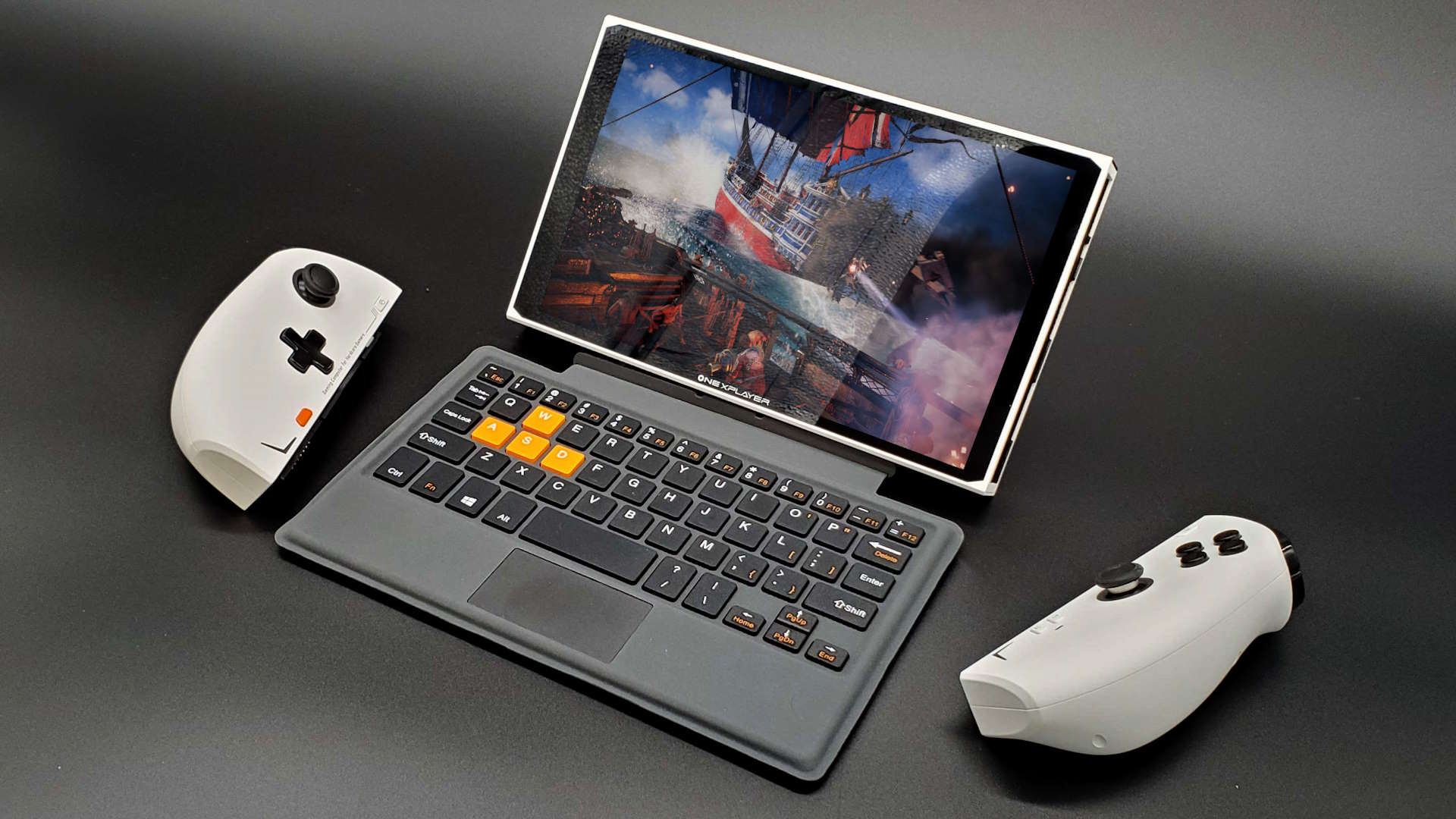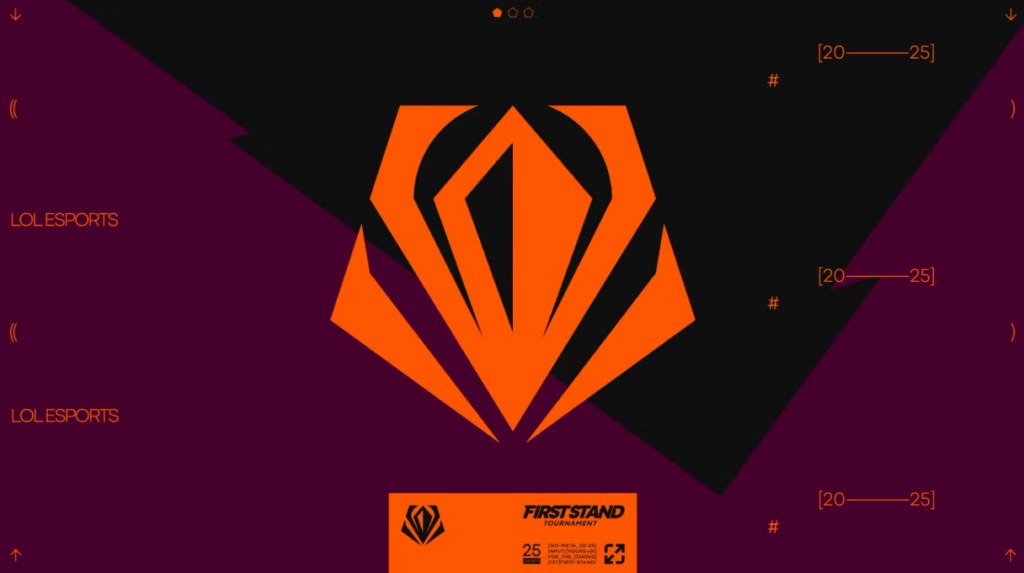
A big boi gaming handheld that wants to be your laptop too. And arguably fails to be either.
Honestly, the OneXPlayer 2 Pro is a lot. It arguably goes further to create a complete PC than a lot of other dedicated handheld gaming PCs, but probably too far in some respects, and not far enough in others.
It’s marketed as a three-in-one device, though you will often just see it in its natural handheld state. And it looks pretty normal like that. Slap the magnetically attached keyboard onto the bottom side of it, however, and it looks anything but. That’s kind of its secondary ‘mode’, as some sort of Microsoft Surface-style laptop-ish thing, with its tertiary mode as a just-a-screen tablet.
Because of this multi-use design, the first thing you will notice the instant you pull it out of its box is that it ships without the controls attached. Because, yes, this is another handheld like the Legion Go, and the Switch before it, that has removable controllers. But these removable pads are dumb sticks, so to speak, with no batteries or wireless connection interfaces inside them, so you’ll need a separate, optional accessory to jam those into to create a pseudo wireless controller.
The next thing you’ll notice is that this chonky boi is thick. Perhaps because it doesn’t come with those controllers attached it looks disproportionately fat, so when you do slot those on it does feel more sensible. But if you compare it to the Steam Deck and even the Ayaneo Kun, there is a definite bulk to the main device which isn’t particularly aesthetically pleasing.
(Image credit: Future)
CPU: AMD Ryzen 7 7840U
GPU: AMD 780M
Memory: 32GB LPDDR5-7500
Storage: 1TB NVMe SSD (2280)
Ports: 2x USB Type-C (1x USB 3.2, 1x USB 4), 1x USB Type-A 3.0, MicroSD 4.0, 3.5mm audio
Display: 8.4-inch
Native resolution: 2560 x 1600
Brightness: 350nits
Battery: 65.5Wh
Weight: 848g (709g w/out controllers)
Price: $949
And that does make it feel really odd to use in either of its laptop or tablet modes. Though, let’s be honest, that 8.4-inch “IPS level” display is also too small to be reliably used in either of those two use cases when you’re talking about a Windows 11-based device.
There’s also the fact that if you do attach the keyboard it entirely takes out one of your charging/USB Type-C ports, though at least it’s the USB 3.2 one and not the full USB 4 plug.
I did briefly attempt to do my job entirely on the device in laptop mode, but it proved far too frustrating an experience for the short time I was able to endure it. The trackpad on the keyboard is tiny, especially for a 2560 x 1600 display, and regularly refused to register that I’d swiped my fingers across it, too. The keys themselves do have a surprising amount of travel to them, but again proved too cramped for comfortable typing in the long-term.
You also won’t catch me trying to type on a teeny handheld PC with an ickle keyboard in public, either. I don’t have a ton of self respect, but even I have to draw the techie geek line somewhere.
What you’re probably gleaning from my front-loading of this review with criticism of the proposed versatility of the OneXPlayer 2 Pro is that I’m not a fan. And that is definitely the case. I’ve been impressed with other OneXPlayer devices I’ve played with—the OneXFly is still one of my favourite wee handhelds, and the OneXPlayer X1 with its Meteor Lake innards is already impressing me, too—but this machine isn’t just a lot, it’s too much.
(Image credit: Future)
(Image credit: Future)
(Image credit: Future)
It’s too big and that’s largely down to its proposed versatility; a versatility I simply cannot see anyone taking the manufacturers up on. The bundle, with the keyboard and wireless controller plug-in, is only another $70-odd, but when the 1TB version of the base OneXPlayer 2 Pro is already $949 it’s hard to justify.
It’s especially hard to justify when we’re still just talking about the same AMD Ryzen 7 7840U silicon we’ve seen in a host of other handhelds, with the same 30W power limit, and essentially the same level of gaming and system performance that you’ll get out of the considerably cheaper Lenovo Legion Go. And while I’m not as much of a fan as Jacob is when it comes to the overall design of the Lenovo handheld, it’s still a far more compelling package than the OneXPlayer 2 Pro.
Sure, the specs list on the OneXPlayer does overall look more appealing than the Legion Go—with its 32GB LPDDR5-7500 and 1TB SSD, and that 65Wh battery—but honestly none of that’s going to justify the extra $300 you’ll have to spend on the OneXPlayer 2 Pro. At least not for me.
If that extra scale of the device gave it some edge in the benchmarks then maybe there could be some justification for this “Pro” handheld, but I’m still seeing the same sort of gaming frame rates as the rest of the similarly specced devices out there. And I’m still not convinced about the idea of slapping a 60Hz 2560 x 1600 screen onto a Ryzen 7 7840U-powered machine. The power of the 780M iGPU still impresses me at a lower level, but it’s far too much to ask of it to deliver gaming performance at its native resolution, and too small a panel to be effective in Windows-based tasks.
OneXPlayer 2 Pro alongside the OneXPlayer X1 (Image credit: Future)
(Image credit: Future)
(Image credit: Future)
✅ You always felt like the Steam Deck needed a keyboard: The optional keyboard is probably the only thing that really makes the OneXPlayer 2 Pro stand out… and not necessarily for the right reasons.
❌ You’re torn between laptop or handheld: This 3-in-1 device isn’t the answer. It doesn’t deliver convincingly either as a dedicated handheld device or as a mini-laptop.
❌ You wanted Switch-like detachable controls: Sure, it has them, but so does the cheaper Legion Go, and these require a separate optional extra to function as a discrete wireless gamepad undocked from the body.
The OneXPlayer 2 Pro also lacks the premium feel I’d want from a near $1,000 handheld. The removable controllers are a big issue here because while they are responsive, and the connection reliable, the fit with the base unit itself is too wobbly for my tastes. There’s far too much movement for it to feel good in the hand. So, even forgetting the tablet or mini-laptop modes, its straight handheld mode just doesn’t do it for me.
And that’s a real shame. The company’s OneXFly is almost the complete antithesis to the OneXPlayer 2 Pro—that’s a rather beautiful, well-built, and pleasingly small device that always makes me smile whenever I pick it up. It’s not like I’m opposed to larger handhelds either; the AOKZOE A1 Pro continues to be one of my favourites, with its large 1920 x 1200 display and chonky design, and as I said, I’ve been super impressed by my time so far with the 11-inch OneXPlayer X1. Though I’ve yet to try that with the removable controllers as they still haven’t been finalised for the prototype unit I’m currently testing.
The OneXPlayer 2 Pro is aiming to show itself as something unique, taking the concept of a handheld gaming PC to its fullest extent, yet it’s not really doing anything that other devices aren’t individually doing better, though maybe not all at the same time. Its unique elements, however, aren’t of enough benefit to justify the expense of the product as a whole and it doesn’t have the sort of premium, or “Pro” feel you’d want it to exude to make you think it might be worth spending that little bit extra on





